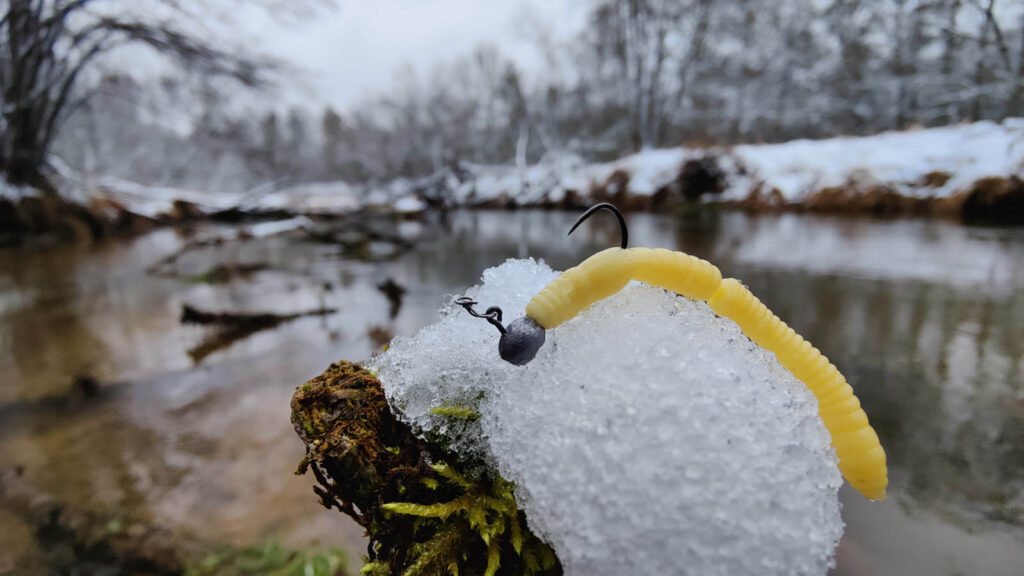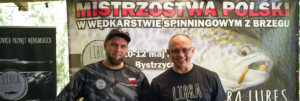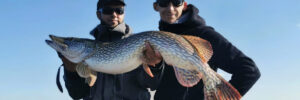Time after the “trout wave”.
After the initial wave of trout frenzy, harder times have come for anglers. Most fish have replenished their post-spawning deficits and their appetite has clearly diminished. In addition, atmospheric conditions and a small available food base also do not encourage intensive feeding. Frequent snowfall significantly cools down the water, which fish, as cold-blooded creatures, react to with apathetic behavior and often even without aggression.

Early spring – why is it more difficult!?
Furthermore, regular rainfall, whether snow or rain, keeps the water level high, making our fishing grounds less readable. When visiting new fishing grounds, our task becomes even more difficult due to high flow and strong drag, which does not make it easier to tempt a trout to take the bait. Admittedly, there are moments and even days when fish eagerly rise to aggressively presented lures, but in most cases, they rather reluctantly detach themselves from the bottom.

How to cope in a difficult time?
In these tough times, the rescue comes in the form of soft lures. I believe that the decision between worms and pupae is often a secondary issue, because when tempting apathetic fish, the most important thing is to properly match the weight of the load, the angle of presentation of the lure, and the way it is retrieved. Personally, I cannot imagine going fishing without boxes containing various sizes of Fatty D’worms, Dying Worms, and pupae imitations, especially larger sizesof Larva and Kukuolka. The most important rule to remember is that the current “pushes” the lure into the bottom when we lead it with the current, and “pushes” it towards the surface when we try to reel it in against the current. The course of action that will bring us the most contact with the fish is a controlled drift with the current, as well as leading it “in an arc,” i.e., fanning it out.

The weight used must ensure that the bait is brought close to the bottom, but our lure cannot behave like a stone, as this will “kill” the secret of its effectiveness – naturalness. After casting, we allow the lure to reach the bottom. In stronger currents, it is worth lifting the rod up to minimize the amount of line in the water, on which the water exerts pressure. Thin braided line and a sensitive blank will transmit every contact of our lure with the bottom. Don’t forget about the fluorocarbon leader, which will provide protection against sharp rocks and other bottom structures that cut thin braided line like a razor. Gentle movements of the rod allow for a controlled drift, during which takes can manifest themselves as short, strong strikes, as well as soft stops, with increasing resistance, as if the lure got stuck in underwater vegetation. We should react to any unnatural behavior of our lure with an immediate, controlled strike. Pay attention to the scent of the used lures. In cold water, their effect is even stronger, and the attractive scent of krill and cheese makes trout hold onto their prey for even longer, giving us a better chance of a successful catch. Such fishing is not technically the easiest and requires some skill, but every outsmarted fish is a reason for joy, pride, and above all, learning that will certainly pay off later.












